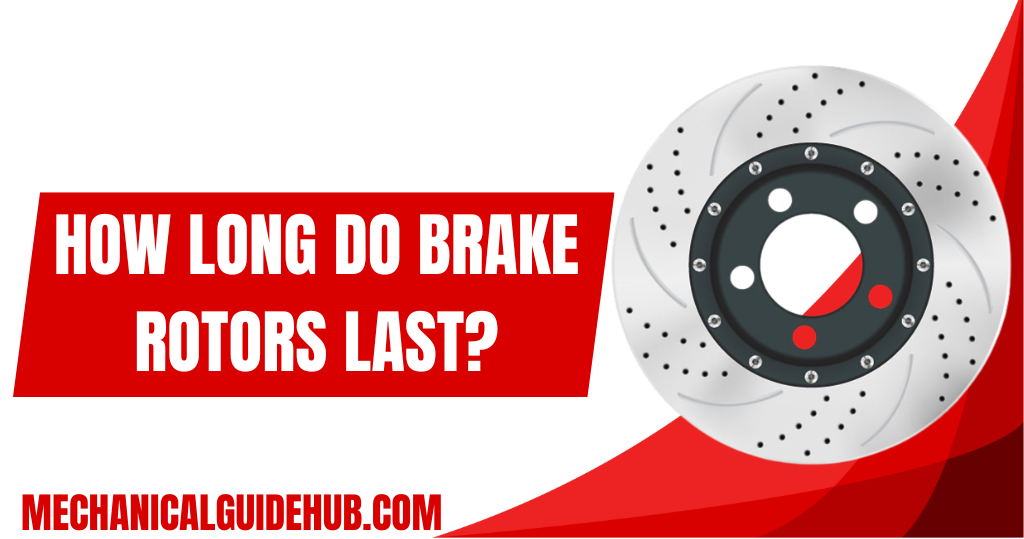How Long Do Brake Rotors Last? Complete Guide for Drivers
Published: 16 Oct 2025

Your car’s brake system does a lot of heavy lifting every time you hit the pedal. Whether you’re driving through city traffic or cruising on the highway, your brakes are constantly working to keep you safe. While most people focus on brake pads, the brake rotors are just as vital. They help convert the vehicle’s speed into heat energy, allowing your car to slow down smoothly. But the question is—how long do brake rotors last, and how can you tell when it’s time to replace them? Let’s dive in.
What Is a Brake Rotor?
A brake rotor, also known as a brake disc, is a round metal component connected to each wheel of your vehicle. When you press the brake pedal, hydraulic pressure forces the calipers to squeeze the brake pads against the rotors. This friction slows down the wheel’s rotation, bringing your vehicle to a stop.
Brake rotors are built to handle high levels of heat and friction, but they don’t last forever. Over time, constant pressure, temperature changes, and everyday wear can cause them to thin out or warp, affecting your car’s braking performance.
How Long Do Brake Rotors Last
The average lifespan of brake rotors usually falls within the range of 30,000 to 70,000 miles. However, several factors influence their actual lifespan. Your driving style, the weight of your vehicle, road conditions, and even weather can all affect how quickly rotors wear down.
If you frequently brake hard, tow heavy loads, or drive in stop-and-go traffic, expect your rotors to wear out sooner. High-quality rotors made of durable metals tend to last longer, especially when paired with regular maintenance and timely brake pad replacements. To be safe, have your brake system inspected every six months or during every tire rotation.
Signs You Need to Replace Them
It’s essential to pay attention to how your car behaves when braking. Here are some common signs your brake rotors may need replacement:
Squealing or grinding noises: Usually caused by worn brake pads rubbing directly on the metal rotor surface.
Vibrations or pulsing: If you feel shaking through the brake pedal or steering wheel, your rotors might be warped.
Longer stopping distances: Worn rotors lose their ability to generate friction efficiently.
Scored or uneven surfaces: Visible grooves or rust spots can reduce braking power and damage pads.
Brake warning light: Some modern vehicles alert you automatically when there’s an issue with the brake system.
If you notice any of these symptoms, have your brakes inspected by a licensed mechanic immediately to avoid safety risks.
How to Replace Brake Rotors?
Replacing brake rotors isn’t always necessary, but when they’re too thin or damaged, replacement is the safest option. Here’s a general process:
- Lift and secure the vehicle using a jack and stands.
- Remove the wheel and brake caliper to expose the rotor.
- Slide off the old rotor and check for rust or buildup on the hub surface.
- Install the new rotor, ensuring it sits flush and clean.
- Reattach the caliper and pads, then refit the wheel.
- Test the brakes before driving to ensure everything functions smoothly.
If the rotors are slightly worn but not cracked or warped, a mechanic may suggest resurfacing them—grinding the surface smooth to restore even contact. However, if the rotors are below the manufacturer’s minimum thickness, resurfacing isn’t safe, and full replacement is required.
How to Extend Brake Rotors Life?
Good driving habits and regular maintenance go a long way in extending the life of your brake rotors. Here are some easy tips:
Avoid hard braking: Gradual stops reduce rotor stress.
Don’t ride the brakes: Allow time between braking to cool the system.
Replace brake pads on time: Worn pads can damage rotors quickly.
Keep your car light: Excess weight increases braking pressure.
Schedule regular inspections: Prevents small issues from turning into costly repairs.
Using high-quality brake parts and ensuring your tires are properly inflated also helps reduce strain on your braking system.
Conclusion
Brake rotors are the unsung heroes of your vehicle’s braking system. Although they typically last 30,000 to 70,000 miles, their lifespan depends on driving style, maintenance, and quality. Keeping up with routine inspections, replacing brake pads when needed, and practicing smoother driving can help your rotors last longer—and keep you safer on the road. Remember, maintaining your brake system isn’t just about performance; it’s about peace of mind every time you drive.
FAQs
You should replace your brake rotors every 30,000 to 70,000 miles, depending on wear and driving conditions. Have them checked regularly during maintenance visits to catch problems early.
The 30-30-30 rule means making 30 slow stops from 30 mph with 30 seconds between each stop. This helps new brakes “bed in” and ensures smoother performance.
You’ll notice vibrations, squealing noises, longer stopping distances, or visible wear on the rotor surface. A mechanic can measure the thickness to confirm if replacement is necessary.
Symptoms include grinding or pulsating when braking, uneven pad wear, or a shaky steering wheel. Ignoring these can lead to costly repairs and reduced braking safety.

- Be Respectful
- Stay Relevant
- Stay Positive
- True Feedback
- Encourage Discussion
- Avoid Spamming
- No Fake News
- Don't Copy-Paste
- No Personal Attacks

- Be Respectful
- Stay Relevant
- Stay Positive
- True Feedback
- Encourage Discussion
- Avoid Spamming
- No Fake News
- Don't Copy-Paste
- No Personal Attacks


